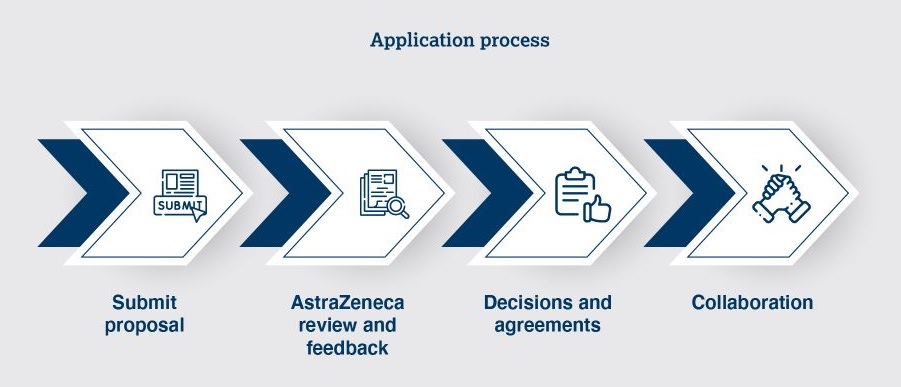Preclinical data
Uncover new insights and data patterns hidden in our datasets
Programme details
Submission status: Currently not accepting proposals
- Collapse all
We are looking to collaborate with data, analytical or computer science research groups that profile data sets with algorithms to interrogate patterns in data and link to biological outcomes. We would encourage these data to be combined with other data sets to expand the biological outcome. Our aim is to create a wider insight into these data, the mechanisms and potential benefit to patients.
You can get access to unpublished data that you can incorporate into your own research. By combining our data with your insights, new biological hypotheses can be tested. Publication of results and insights is encouraged.
This programme is open to academic or biotech researchers working in data, analytical or computer science.
Find the right data group for you
Functional genomics cellular imaging data
We are offering access to multiple imaging datasets from genome-wide arrayed CRISPR screening projects conducted in cellular models of disease.
Datasets are available for the following research areas:
- Cell lethality
- Lipid nanoparticle uptake
- Androgen receptor modulation
- Estrogen receptor modulation
We are looking for data, analytical, or computer science research groups with:
- Algorithms to interrogate data patterns that link them to biological outcomes
- The ability to combine datasets
- The resources to develop novel methods for extracting information from cellular images
In addition, a dataset for organelle and vesicle localisation/morphology (obtained in collaboration with MRC-LMB; Wong et al. J Cell Biol 2024 [DOI 10.1083/jcb.202306048]) is available upon request.
Preclinical safety data
We are looking to share safety data from our preclinical compounds with researchers to ascertain their suitability for human use. Our data have been generated from in vivo animal studies of rodent and non-rodent lineages, including:
- Standard acute and repeat dose studies with clinical observations such as serum chemistry and urinalysis measures, and gross pathology and histopathology observations
- Administered dose studies, with toxicokinetic measurements provided where available
We are looking for toxicologists, data, and computer scientists willing to collaborate with us, with each other, and with public or private funding bodies to brainstorm, generate, and develop predictive models for preclinical safety.
Oncology combinations data
We are providing access to over 11,000 preclinical pharmacology data points, which include the following:
- Phenotypic (cell viability) data from over 11,000 experiments testing over 100 drugs paired at various dose combinations in up to 85 cancer cell lines. Cell lines were derived primarily from colon, lung, and breast cancer. Comprehensive monotherapy drug response data for each drug and cell line are available
- “Synergy scores” comparing the efficacy of drug combination versus monotherapy in cancer cell lines
- Properties of drugs, including gene names of protein target, molecular weight, H-bond acceptors, H-bond donors, cLogP, and Lipinski's rule of 5
- The ability to link to deep molecular profiles for respective cell panels in public resources such as GDSC/COSMIC and CCLE
Can’t find the molecule you are looking for? We release new molecules regularly. Sign up to our newsletter to be the first to hear about them.
FAQs
- Collapse all
Our Open Innovation programmes are based on mutual trust and reward innovation, including in the context of intellectual property (IP) rights. If a collaboration is agreed, the party that has pre-existing IP, or generates IP, will retain their rights on the target or approach. However, we would expect first right of negotiation to in-license the lead series derived from projects in which our compound libraries are screened.
We do not typically provide funding for collaborations using AstraZeneca molecules or libraries. However, we provide sufficient AstraZeneca molecules to enable research studies as well as access to necessary data to support experiment design and interpretation of results. We will also provide a letter of support to accompany a funding application.
We are committed to the same ethical policies that are practiced during grant and manuscript peer-reviews. We will not use or disclose information you submit, unless you approve in writing, or the information becomes public, is separately received or independently developed.
Our Open Innovation programme supports agreement terms that facilitate participation, open collaborative brainstorming and problem solving, and are consistent with well-established and tested academic-industry agreement structures. While the terms and conditions of the collaboration are determined on a case by case basis with your organisation, broadly applicable terms and conditions include:
- Pre-existing IP retained with the original owner
- New IP follows ownership framework taking into account the contribution of each party and where possible using the well-established academic-industry templates
- Publications are encouraged after allowing AstraZeneca to comment
- Patent(s) are encouraged to be filed (if applicable), with AstraZeneca confidential information remaining protected
- If the collaboration generates positive findings, AstraZeneca has an option to negotiate a license to further advance the findings towards positive patient benefits and commercialisation
- For compounds ‘live’ in development, AstraZeneca minimally receives non-exclusive, royalty-free, fully paid license, with the right to sublicense without limitation, for all purposes for project IP
In general, Collaborative Research Agreement (CRA) and/or Clinical Trial Agreement (CTA) are/is negotiated for an agreed upon Full Project Proposal/Plan.
- Ownership of project IP and rewards (e.g. royalties) if positive data found are based on multiple factors including regional/country standards, IP policies and the current development stage/status of the compound
- AstraZeneca has at least an option to negotiate a license for project IP
